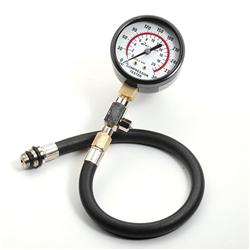I'll start with some stats:
2275 Type I, New motor
44 Webers, 150 Main, 65 Idle, 200 air I live at 2500' and drive between 2000-4000'.
I adjusted the valves to .0 for the first time, and tightened the belt by one shim. Went for a few drives. Drove great except for some stumbling at about 2500 rpms. I figured I'd need to adjust the carbs at some time.
I changed the oil, filter, and sump cover with a drain plug. 20/50 Brad Penn oil, 1334 Napa Gold filter. It was the Napa equivalent of the Bosch 3310 that came on the car. Then the car sat for a few weeks while the Rainamagedon took over the weather outside.
Today, finally a clear day. I start it up and it doesn't sound right. Hard to explain, but it wasn't as smooth as it was before. Every minute of so, at idle, the tone changed. The exhaust seemed to be a touch more vigorous for a split second. After it was warm, I took it out. The power wasn't there so I turned around and headed back home.
I removed the Idle, and Main jets and gave them a spray and blew them out with air. I took it out again, but the same.
I checked the timing and it was at about 29-30, so I adjusted it to 28 degrees.
What should I check next? What could possibly change with the car sitting?
Thanks,
CG



